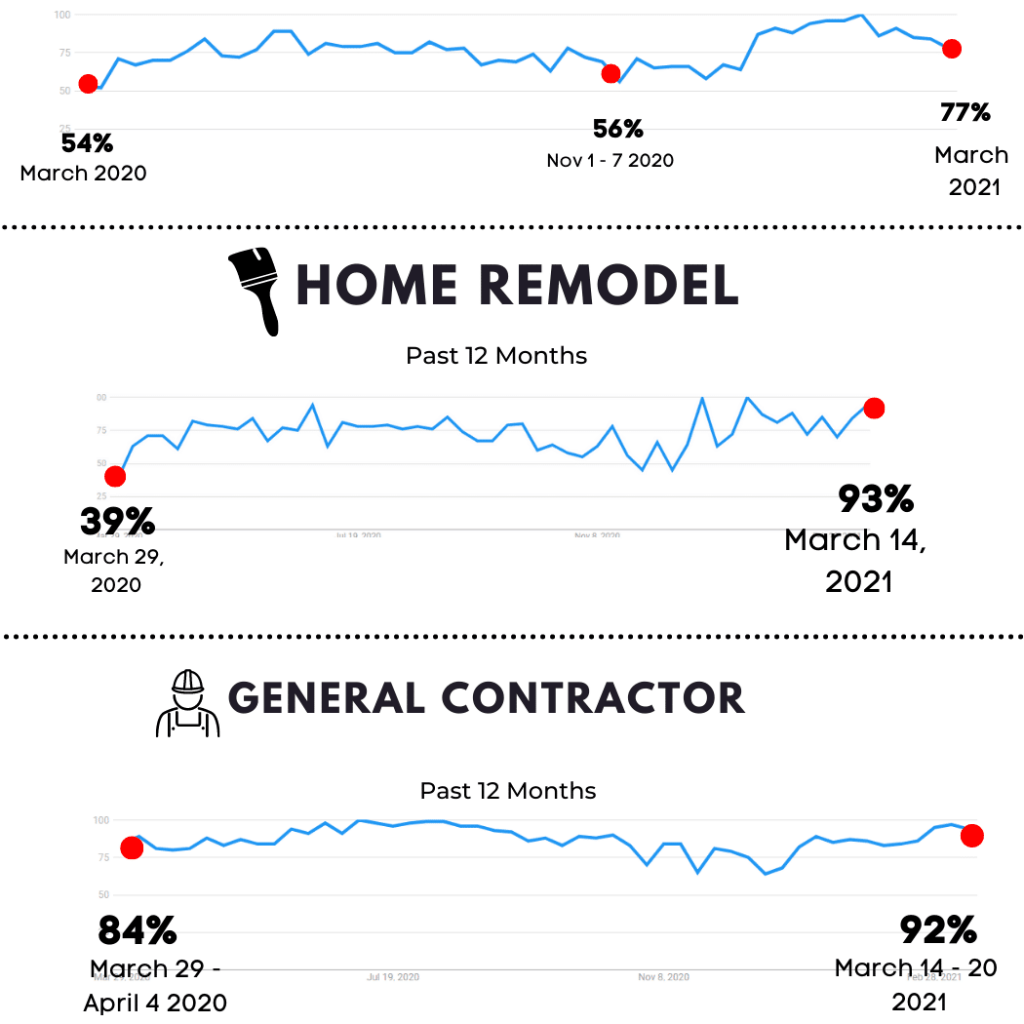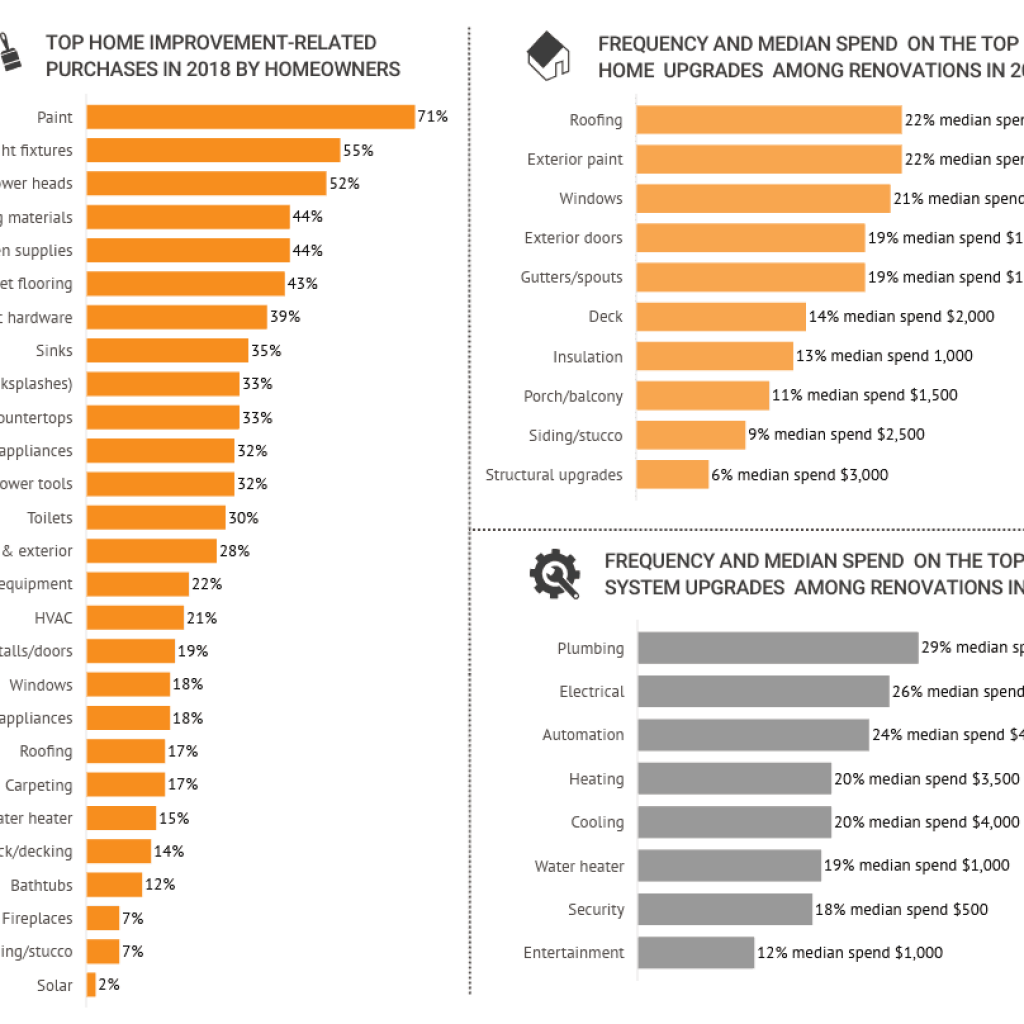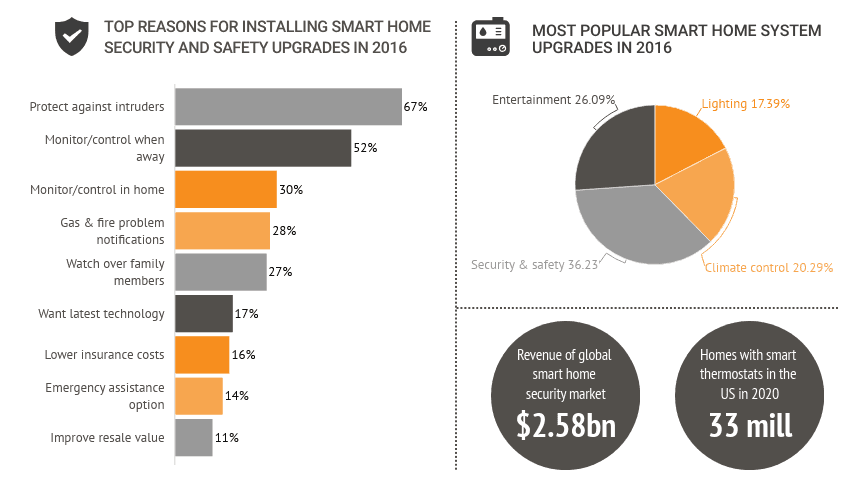Home Improvement Web Designs
DIY Home Improvement projects are more accessible than ever, and that accessibility is driven by the most significant change in consumer behavior in the past ten years: the shift from desktop and laptop search to mobile search.
Home Remodeling Website Searches have more than DOUBLED from 2020 to 2021
We analyzed search trends for home owners searching for remodeling, kitchen remodeling and general contractors for home improvement and found that search volume has doubled since the pandemic started.
According to the home improvement research, property owners have been investing in home improvement spending which has led to more DIY home improvement projects.
This data leads us to believe now that more homeowners are working from home and staying in the house, they are interested in remodeling and making improvements to their homes.

Home Improvement Website Trends and Statistics
With higher internet activity this year, more homeowners went online to research local remodeling pros. Homeowners went from requesting 2-3 quotes in 2019, to requesting 4-6 on average. This underscores the importance of being first to every new lead.
Research shows that if you reach out to new leads over text in less than 5 minutes, your likelihood of closing the deal increases 21x. Companies who built processes around “speed to lead” this year are enjoying the fruits of increased demand.
But the increased demand came at a cost for many remodelers in 2020: busy reps did little to no follow-up with leads that didn’t “one-call close”, leaving thousands on the kitchen table this past year. Incorporating consistent, multi-touch follow-up over text, email, and phone increased close rates by 8.5% on average.
78% of jobs go to the first contractor to get to the lead.
98% of text messages are opened and read.
79% of remodelers have trouble following up with unsold leads.
8.5% increase in close rate with automated follow-up to unsold leads.

Accessible Home Improvement Websites
Americans are improving the appearance and comfort of their homes, starting with the kitchen and bathrooms first. While these are higher-ticket projects, the potential for return on the investment made is high, especially if the property will be sold or rented.
With 71% of homeowners undertaking improvement or renovation projects including interior or exterior paint, this is by far the most commonly purchased home improvement product. The paint section in most home improvement stores can take up as much as a fifth of the store.
Most Wanted Website Design: Kitchen and Bath
Kitchens and baths continue to be the most popular projects, even though they are the most pricey and involved. Many homeowners regard their kitchens as a central gathering place in the home. Healthy food, cooking, and nutrition are increasingly valuable to younger generations of homeowners and having a beautiful, functional kitchen to cook in is part of a coveted lifestyle.
Kitchens and bathrooms can also be the most unsightly areas in a house as they age because they are the most difficult to transform and update. It’s easy to go through a home and change paint colors, remove tired brass doorknobs and replace with more trendy brushed nickel or oiled bronze hardware, and hang new curtains. Even new carpet and flooring projects can often be completed in less than a week.
$16.09
average cost-per-click for home improvement ads in 2020.
$186
average cost per lead.
1.4%
increase in cost per lead in 2020 vs. 2019.
8.64%
average conversion rate from ads.
65%
of ad clicks coming from mobile.

Mobile Friendly Home Improvement Website Design
Security and “smart” enhancements for the home represent a growing share of the market, with spending increasing as much as 20% each year since 2016. Nearly half of the renovation projects undertaken by homeowners will also include smart technology.
Home automation is nothing new, but technology has become highly sophisticated. Smart systems and devices are made to automate or remotely control home systems and functions such as thermostats, lighting, security systems, and even vacuum cleaners. These are managed through an app on a phone, on a computer, or another interface.
